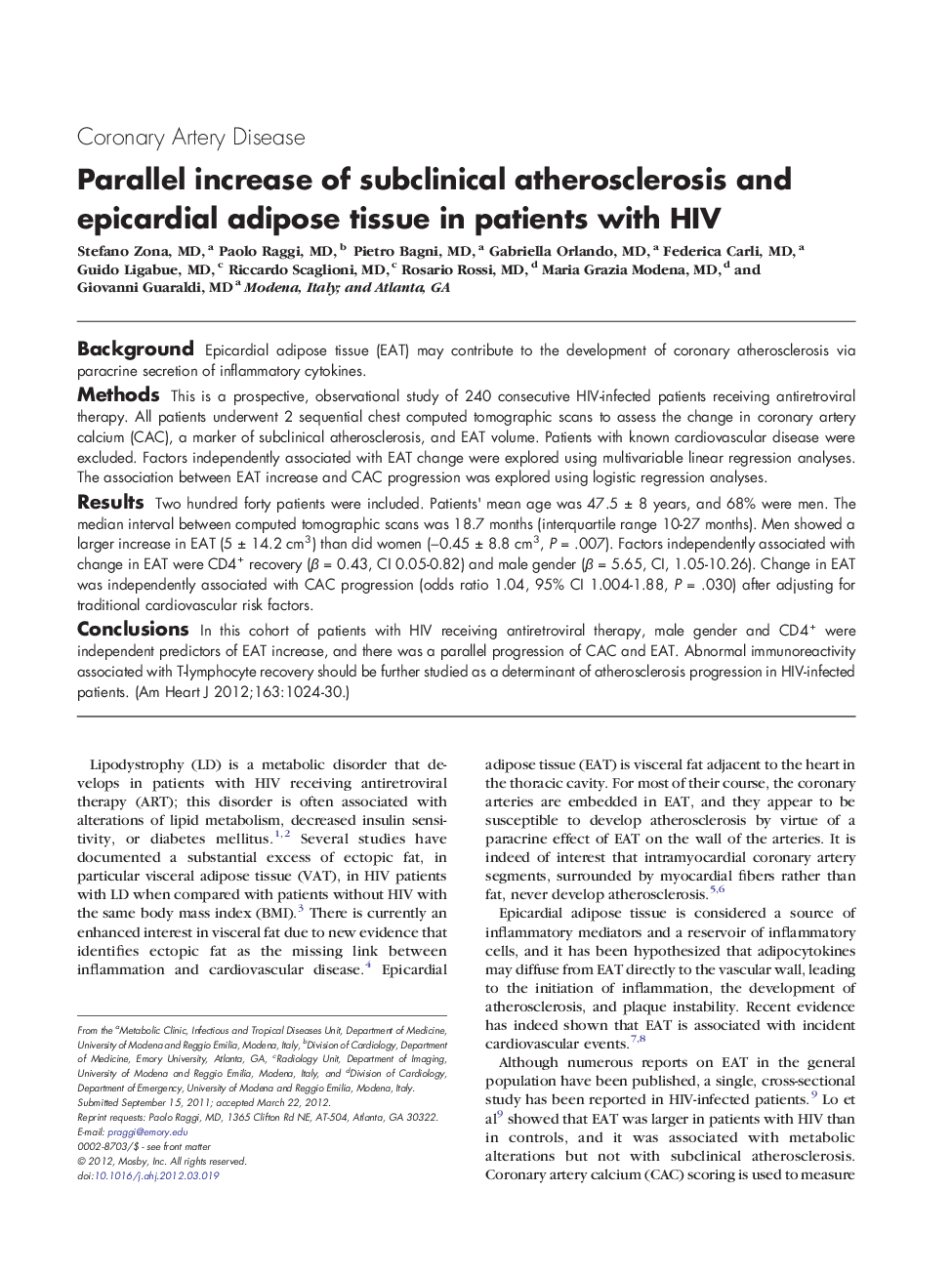| Article ID | Journal | Published Year | Pages | File Type |
|---|---|---|---|---|
| 2849523 | American Heart Journal | 2012 | 7 Pages |
BackgroundEpicardial adipose tissue (EAT) may contribute to the development of coronary atherosclerosis via paracrine secretion of inflammatory cytokines.MethodsThis is a prospective, observational study of 240 consecutive HIV-infected patients receiving antiretroviral therapy. All patients underwent 2 sequential chest computed tomographic scans to assess the change in coronary artery calcium (CAC), a marker of subclinical atherosclerosis, and EAT volume. Patients with known cardiovascular disease were excluded. Factors independently associated with EAT change were explored using multivariable linear regression analyses. The association between EAT increase and CAC progression was explored using logistic regression analyses.ResultsTwo hundred forty patients were included. Patients' mean age was 47.5 ± 8 years, and 68% were men. The median interval between computed tomographic scans was 18.7 months (interquartile range 10-27 months). Men showed a larger increase in EAT (5 ± 14.2 cm3) than did women (−0.45 ± 8.8 cm3, P = .007). Factors independently associated with change in EAT were CD4+ recovery (β = 0.43, CI 0.05-0.82) and male gender (β = 5.65, CI, 1.05-10.26). Change in EAT was independently associated with CAC progression (odds ratio 1.04, 95% CI 1.004-1.88, P = .030) after adjusting for traditional cardiovascular risk factors.ConclusionsIn this cohort of patients with HIV receiving antiretroviral therapy, male gender and CD4+ were independent predictors of EAT increase, and there was a parallel progression of CAC and EAT. Abnormal immunoreactivity associated with T-lymphocyte recovery should be further studied as a determinant of atherosclerosis progression in HIV-infected patients.
